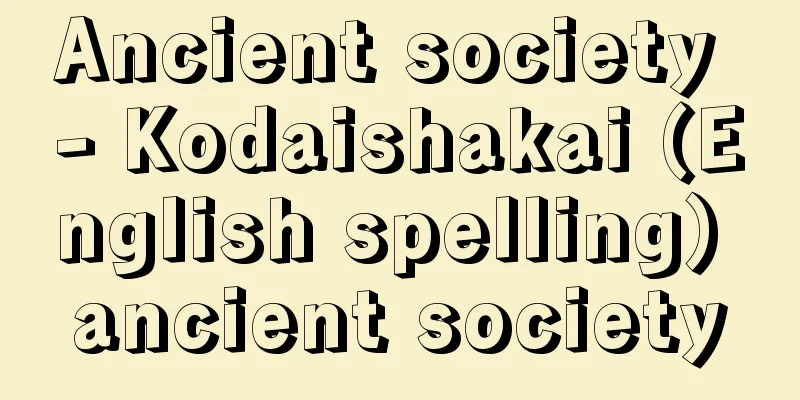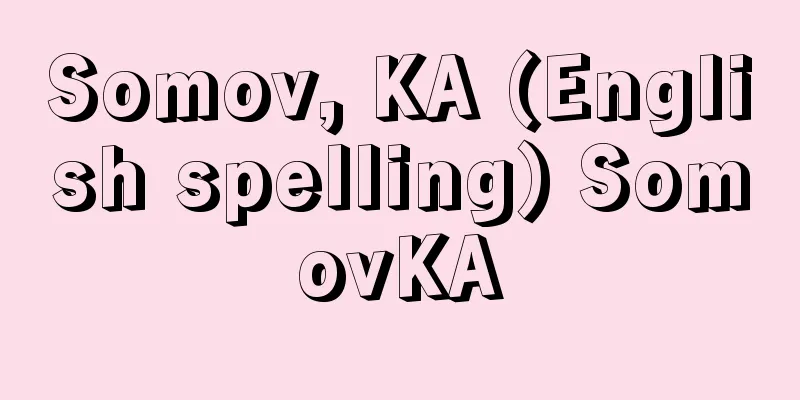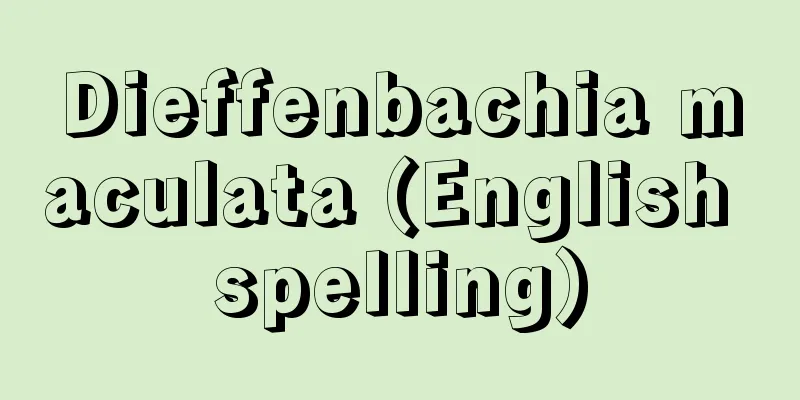Ancient society - Kodaishakai (English spelling) ancient society

|
Primitive society (society of primitive communities) is sometimes called ancient society, as L.H. Morgan does, but generally it refers to a society characterized by slavery that arose after the dissolution of primitive communities, and the so-called "classical antiquity" of Greece and Rome is considered to be a representative form of this. It is characterized by the maturation of private land ownership and private management, but at the same time there is the burden of obligations necessary for the maintenance and management of public land. Moreover, it was necessary to constantly expand it, leading to repeated wars of aggression. Therefore, free people were warriors, and community states (typically city-states) were also warrior organizations, and the fruits of war brought about the acquisition of land, slaves, and products, and slave agriculture and handicrafts were developed. Of course, there are several forms of ancient society depending on the form of communal land occupation carried over from primitive communities and the degree of ties or loosening of tribal ties. While classical antiquity is typical, it is diverse, ranging from the tribal community-like Asian form to the Germanic form, which was almost exclusively a regional and village-like form that developed into medieval feudal society. It is safe to say that ancient Japanese society continued from the time of Himiko in the 2nd or 3rd century, through the Heian period, and until the establishment of early feudalism by the Kamakura shogunate. Source: Encyclopaedia Britannica Concise Encyclopedia About Encyclopaedia Britannica Concise Encyclopedia Information |
|
L.H.モーガンのように原始社会 (原始共同体の社会) を古代社会と呼ぶ場合があるが,一般的には原始共同体の解体のうえに生じた奴隷制を特徴とする社会をいい,ギリシア,ローマのいわゆる「古典古代」がその代表的形態とみられている。その特徴は私的土地所有と私的経営の成熟にあるが,同時に公有地の維持,管理に必要な義務負担もある。しかも絶えずそれを拡張していかざるをえず,侵略戦争を繰返すことになる。したがって自由民は戦士であり,共同体国家 (典型的には都市国家) は戦士組織でもあり,戦争の成果は,土地と奴隷と産物の獲得をもたらし,奴隷による農耕や手工業が展開された。もちろん,古代社会にも原始共同体から持越された共同体的土地占取の様式や種族的結合の紐帯や弛緩の度合いによっていくつかの形態がみられる。古典古代を典型としながらも,種族共同体的なアジア的な形態から,のちの中世封建社会にまで発展したほとんど地縁的,村落的な形態を示すにすぎないゲルマン的形態にいたるまで多様である。日本の古代社会は2~3世紀の卑弥呼 (ひみこ) の時代から,平安時代を経て,鎌倉幕府によって前期封建制が成立するまで続いたとみてよいであろう。
出典 ブリタニカ国際大百科事典 小項目事典ブリタニカ国際大百科事典 小項目事典について 情報 |
<<: Gotai Shinbunkan - Gotai Shinbunkan
>>: The Story of the Five Dynasties - English translation:
Recommend
Wirth, Louis
Born: August 28, 1897 in Gemünden Died: May 3, 195...
Torsion spring - Strepsipteran
A general term for insects belonging to the Strep...
Urban - Uruban
... Ullambana is said to be a transliteration of ...
Peat - peat (English spelling)
Also known as grass peat, according to the JIS (J...
Illegitimate Child - Shiseiji
(Original title, French: Le Fils naturel ) A play ...
The Great Empress - Koniolk
〘Noun〙 (In ancient Korean, "Koni" means ...
Anderson, GM
…It is the origin of American feature films and W...
Primary producers
…Plankton can be broadly divided into two groups:...
Inkirino - Inkirino
... Hacienda management is broadly divided into t...
First day - First day
〘 noun 〙 In the Ritsuryo system, the days when an ...
Colloquial - Kogo
It is the opposite of literary language. It means...
Aconitum chinense (English spelling) Aconitumchinense
…Poison [Nitta Aya]. . . *Some of the terminology...
Navy Minister's Flag
…By its very nature, the naval ensign must always...
Giten
A monk from Goryeo (Korea). His posthumous name w...
Tano [town] - Tano
A former town in Miyazaki County in the southern p...


![Euboea [island] - Euboea](/upload/images/67cb04ddb99aa.webp)






